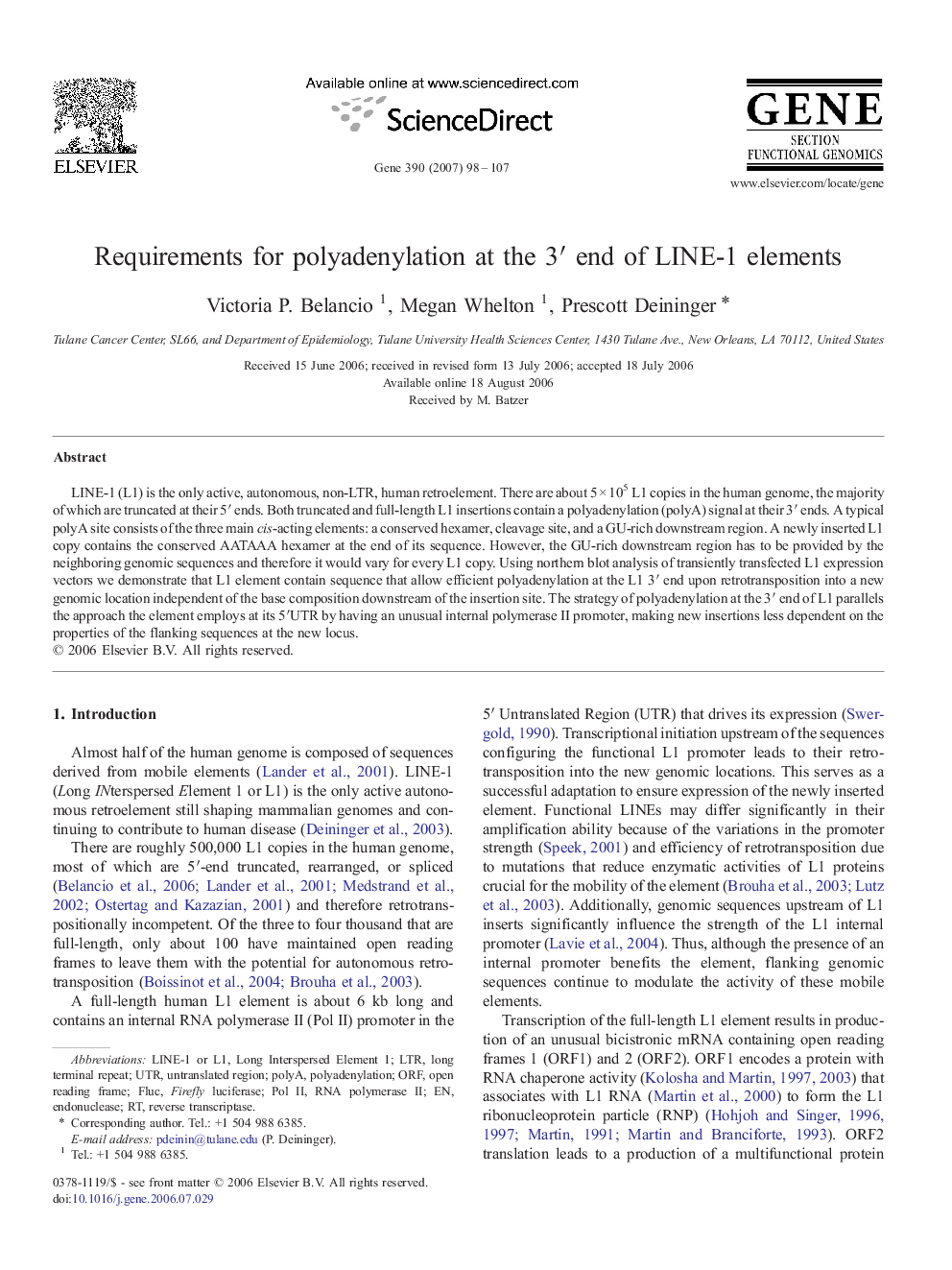| Article ID | Journal | Published Year | Pages | File Type |
|---|---|---|---|---|
| 2819836 | Gene | 2007 | 10 Pages |
LINE-1 (L1) is the only active, autonomous, non-LTR, human retroelement. There are about 5 × 105 L1 copies in the human genome, the majority of which are truncated at their 5′ ends. Both truncated and full-length L1 insertions contain a polyadenylation (polyA) signal at their 3′ ends. A typical polyA site consists of the three main cis-acting elements: a conserved hexamer, cleavage site, and a GU-rich downstream region. A newly inserted L1 copy contains the conserved AATAAA hexamer at the end of its sequence. However, the GU-rich downstream region has to be provided by the neighboring genomic sequences and therefore it would vary for every L1 copy. Using northern blot analysis of transiently transfected L1 expression vectors we demonstrate that L1 element contain sequence that allow efficient polyadenylation at the L1 3′ end upon retrotransposition into a new genomic location independent of the base composition downstream of the insertion site. The strategy of polyadenylation at the 3′ end of L1 parallels the approach the element employs at its 5′UTR by having an unusual internal polymerase II promoter, making new insertions less dependent on the properties of the flanking sequences at the new locus.
